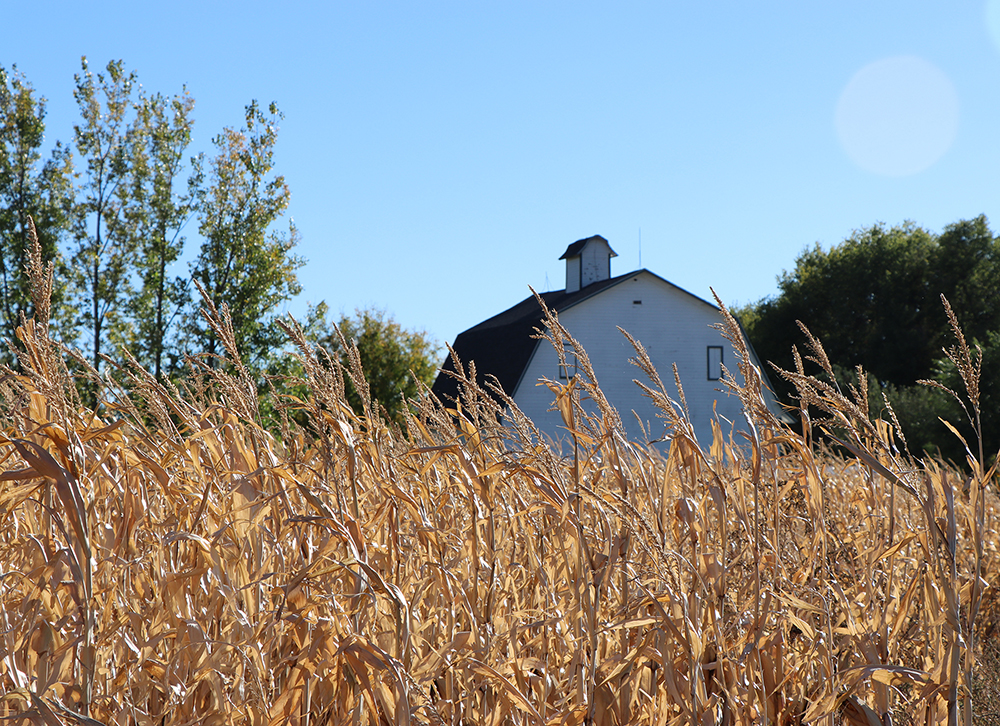With spring planting right around the corner, many farmers will likely be focused on planting the crop and not necessarily on what is happening in the grain markets.
While you’re gearing up for spring planting, corn prices will likely face continued volatility in the coming weeks and months due to tariff and trade fears, and weather watching around the United States and world.
If you have corn in the bin, some of you may be considering whether it would behoove your operation to sell that corn now, ahead of planting season, or wait and hope for a summer price rally.
From a marketing perspective
Not sure what to do with your corn in the coming weeks? Here are three simple ideas to consider.
1) Basis contract—If you plan to store corn in your bin at home, be mindful of your local basis levels. In some Midwest locations, the basis may currently be attractive as some grain elevators may want to try to secure as much corn as possible (especially as corn is still relatively on the historically “cheap” side) ahead of the busy planting season.
Consider looking into cash basis contracts to protect what may be an attractive local basis level. If you commit to this strategy, know that you are required to deliver a set number of bushels to your elevator, with the basis locked in, but the grain is still not fully priced.
It is your responsibility to do a final pricing of the contract when you feel the futures price is at your target price (essentially you feel that the corn futures price will ultimately work higher, hoping for a potential summer rally). Make sure you ask your elevator what fees may be associated with this strategy.
2) Buy a put option—Not interested in making cash sales at this time, yet want to protect current value “just in case” of black swans, larger carryout on the next U.S. Department of Agriculture report, or geo-political volatility in the weeks ahead that might lower prices?
Buying a put option (no margin calls) allows you to give yourself a price floor to protect the current value of corn futures prices. July 2025 put options expire on June 20, and covers enough time to get through spring planting, upcoming tariff and trade uncertainties, and multiple USDA reports.
One put protects 5,000 bushels, and the cost varies between 10 to 20 cents per contract (plus commission and fees), depending on the strike price incorporated.
For the grain you plan to store in bins at home, this may be an attractive way to have peaceful sleep at night, knowing the value of your grain is protected with a price floor.
3) Make the cash sale and re-own with a call option. If you make that cash sale, but then fear missing out on higher prices, then consider buying a call option. Buying a call (no margin calls) allows you on paper to be able to participate in any further upward price action, even though the grain has left your farm.
One call covers 5,000 bushels, and the cost varies between 10 to 20 cents per bushel (plus commission and fees), depending on the strike price and month incorporated. July 2025 call options also expire on June 20.
Prepare yourself
The market volatility that will likely continue to unfold in the coming weeks and months may be extreme with weather-watching and geo-political uncertainty stemming from around the world.
There is no way to outguess what the market will do, or how prices will respond to any of the above events. You must be strategic with your marketing. Incorporating the above strategies can be of assistance.
If you have questions, you can reach Naomi at [email protected] or find her on X (formerly twitter) @naomiblohm.
Futures and options trading involve significant risk of loss and may not be suitable for everyone. Carefully consider whether such trading is suitable for you in light of your financial condition. Examples of seasonal price moves, or extreme market conditions are not meant to imply that such moves or conditions are common occurrences or likely to occur. Futures prices have already factored in the seasonal aspects of supply and demand. Total Farm Marketing refers to Stewart-Peterson Group Inc., Stewart-Peterson Inc., and SP Risk Services LLC. Stewart-Peterson Group Inc. is registered with the Commodity Futures Trading Commission (CFTC) as an introducing broker and is a member of National Futures Association. Stewart-Peterson Inc. is a publishing company. SP Risk Services LLC is an insurance agency and an equal opportunity provider. A customer may have relationships with any of the three companies.


